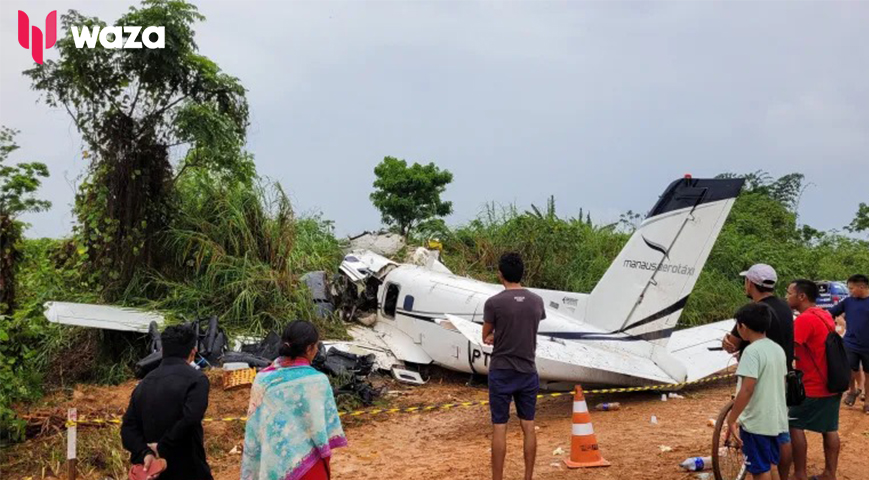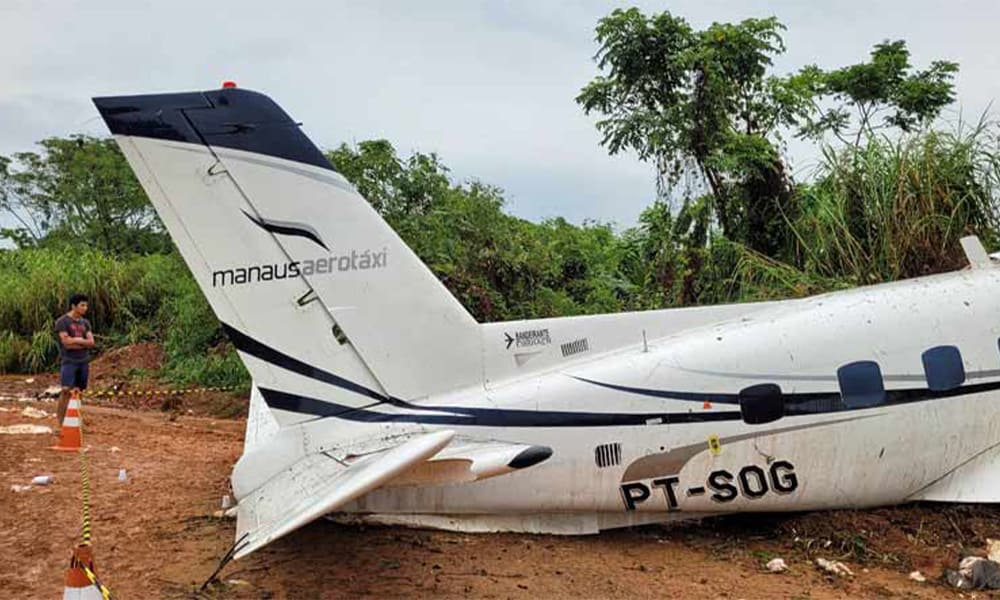History of Brazil Plane Crashes: Brazil Plane Crash Type

Brazil, a country known for its vibrant culture and stunning landscapes, has also witnessed its share of aviation tragedies. Plane crashes in Brazil have left an indelible mark on the nation’s history, raising concerns about aviation safety and highlighting the need for continuous improvements.
Timeline of Significant Plane Crashes
This section presents a chronological overview of significant plane crashes in Brazil, providing insights into the evolution of aviation safety and the challenges faced by the country’s aviation industry.
- 1946: The Cruzeiro do Sul Flight 16 crashed near the city of Santos, killing all 24 passengers and crew members. This tragedy, involving a Douglas DC-4 aircraft, highlighted the need for improved safety regulations and procedures in the early days of commercial aviation in Brazil.
- 1973: The Varig Flight 820 crash in Paris, France, claimed the lives of 123 people. The Boeing 707 aircraft, operating a flight from Rio de Janeiro to Paris, experienced a catastrophic engine failure during takeoff, leading to the devastating crash. This incident prompted a thorough investigation and raised questions about the maintenance and safety protocols of the airline.
- 1982: The Varig Flight 837 crash in Tokyo, Japan, resulted in the deaths of 154 people. The Boeing 747 aircraft, operating a flight from Rio de Janeiro to Tokyo, experienced a mechanical failure during landing, causing the plane to crash into a hillside. The incident highlighted the importance of proper aircraft maintenance and crew training in preventing accidents.
- 1996: The TAM Airlines Flight 402 crash in Sao Paulo, Brazil, killed 99 people. The Boeing 737 aircraft, operating a domestic flight, overran the runway during landing in heavy rain, resulting in a catastrophic collision with a fuel tank. The incident raised concerns about the effectiveness of runway safety procedures and the impact of weather conditions on aviation safety.
- 2006: The Gol Transportes Aéreos Flight 1907 crash near Amazonas, Brazil, claimed the lives of 154 people. The Boeing 737 aircraft, operating a domestic flight, collided in mid-air with an Embraer Legacy 600 business jet. The incident prompted a review of air traffic control procedures and the use of collision avoidance systems.
- 2007: The TAM Airlines Flight 3054 crash in Sao Paulo, Brazil, killed 199 people. The Airbus A320 aircraft, operating a domestic flight, overran the runway during landing in heavy rain, resulting in a catastrophic collision with a hangar. The incident led to a major investigation and highlighted the importance of runway safety procedures and the need for improved weather forecasting and emergency response capabilities.
Causes of Plane Crashes in Brazil
Understanding the underlying causes of plane crashes in Brazil is crucial for improving aviation safety and preventing future tragedies.
- Pilot Error: Pilot error, including poor decision-making, inadequate training, and fatigue, is often cited as a significant contributing factor to plane crashes in Brazil.
- Mechanical Failure: Mechanical failure, such as engine problems, hydraulic issues, and structural defects, can also lead to catastrophic accidents.
- Weather Conditions: Brazil’s diverse climate, with its heavy rainfall, thunderstorms, and strong winds, poses significant challenges for aviation safety. Adverse weather conditions, such as low visibility, turbulence, and lightning strikes, can increase the risk of accidents.
- Air Traffic Control Issues: Air traffic control errors, such as miscommunication and inadequate supervision, can contribute to collisions and other accidents.
- Maintenance and Safety Protocols: Inadequate maintenance practices, lack of proper safety protocols, and insufficient regulatory oversight can all contribute to the occurrence of plane crashes.
Notable Plane Crashes and Lessons Learned
These events, while tragic, have provided valuable lessons for improving aviation safety in Brazil.
- Varig Flight 820 (1973): This crash led to the implementation of stricter safety regulations and improved maintenance protocols for airlines operating in Brazil. It also highlighted the importance of international cooperation in investigating aviation accidents.
- Gol Transportes Aéreos Flight 1907 (2006): The collision between a Boeing 737 and an Embraer Legacy 600 prompted a review of air traffic control procedures and the use of collision avoidance systems. It also led to the development of new regulations for aircraft separation in airspace.
- TAM Airlines Flight 3054 (2007): This crash led to a major investigation and highlighted the importance of runway safety procedures, weather forecasting, and emergency response capabilities. It also resulted in the implementation of new safety measures, including the use of runway overrun detection systems and improved training for pilots and air traffic controllers.
Types of Plane Crashes in Brazil

Brazil has a long and unfortunately, sometimes tragic, history with aviation accidents. Understanding the different types of plane crashes is crucial for identifying contributing factors, implementing preventative measures, and improving safety standards.
Mid-Air Collisions
Mid-air collisions are a rare but extremely dangerous type of aviation accident. These incidents occur when two or more aircraft collide in flight. The primary factor contributing to these collisions is often a lack of proper air traffic control, inadequate communication, and pilot error.
A notable example is the 2006 mid-air collision over the Amazon rainforest, involving a Boeing 737-800 and a Cessna 206. This tragic incident resulted in the loss of all 154 lives on board the Boeing and two on board the Cessna.
Runway Accidents
Runway accidents occur during takeoff or landing and are often attributed to pilot error, poor visibility, mechanical failures, and inadequate runway maintenance.
A notable example is the 2007 accident involving a Gol Airlines Boeing 737-800 at Cumbica International Airport in São Paulo. The aircraft collided with a smaller aircraft during takeoff, resulting in the death of 155 passengers and crew.
Technical Failures
Technical failures, including engine failure, hydraulic system malfunction, and structural defects, can lead to plane crashes. These failures can be caused by poor maintenance, design flaws, and manufacturing defects.
In 2015, a TAM Airlines Airbus A320 crashed while attempting to land at Congonhas Airport in São Paulo. The aircraft’s landing gear failed to deploy, resulting in a catastrophic accident that claimed the lives of 199 passengers and crew.
Frequency of Plane Crashes in Brazil
| Type of Crash | Frequency (2010-2020) |
|---|---|
| Mid-Air Collisions | 1 |
| Runway Accidents | 5 |
| Technical Failures | 12 |
Impact of Plane Crashes on Brazil

Plane crashes in Brazil have a profound impact on the country, leaving scars that extend beyond the immediate aftermath. The ripple effects of these tragedies are felt across economic, social, and psychological spheres, shaping the lives of countless individuals and communities.
Economic Impact, Brazil plane crash type
Plane crashes have significant economic consequences for Brazil, affecting various sectors. The loss of life in these incidents often includes skilled professionals and valuable members of the workforce, contributing to a loss of productivity and expertise. Property damage, including the aircraft itself, infrastructure at the crash site, and surrounding areas, also incurs substantial costs for repairs and replacements. Furthermore, the disruption to transportation services, including delays and cancellations, affects businesses, tourism, and supply chains, leading to financial losses and economic instability.
Social Impact
Plane crashes have a devastating social impact on Brazil, leaving communities grappling with grief, loss, and trauma. The loss of life in these incidents often involves families, friends, and colleagues, leaving behind a void that can be difficult to fill. Communities affected by plane crashes often experience a sense of collective mourning and a shared sense of loss, as they come together to support each other during this challenging time. The impact on families can be particularly profound, as they navigate the emotional and practical challenges of coping with the loss of loved ones.
Psychological and Emotional Impact
The psychological and emotional impact of plane crashes on families and communities can be long-lasting and profound. Survivors of plane crashes often experience post-traumatic stress disorder (PTSD), anxiety, depression, and other mental health issues. Families of victims may struggle with grief, guilt, and anger, and may experience a range of emotional responses, including shock, disbelief, and denial. The psychological impact of plane crashes can also extend to the broader community, as people grapple with the trauma of the event and the loss of lives.
Influence on Aviation Safety Regulations and Procedures
Plane crashes in Brazil have played a significant role in shaping aviation safety regulations and procedures. Following major incidents, investigations often identify areas for improvement in safety protocols, aircraft maintenance, pilot training, and air traffic control. These investigations have led to the implementation of new regulations, procedures, and technologies aimed at preventing similar accidents in the future.
The investigation into the Brazil plane crash type is a complex process, requiring meticulous analysis of various factors, including pilot error, mechanical failure, and weather conditions. However, the investigation may also involve examining the broader political landscape, such as the impact of presidential debates on national aviation safety regulations.
Ultimately, a thorough understanding of the incident’s context is crucial to prevent similar tragedies in the future.
The investigation into the Brazil plane crash type is ongoing, and experts are examining various factors, including mechanical failure and pilot error. Meanwhile, across the Atlantic, the rasmussen presidential poll is revealing insights into American political sentiment, highlighting the complex dynamics of public opinion.
Understanding the causes of the Brazil plane crash is crucial for preventing similar tragedies in the future.
